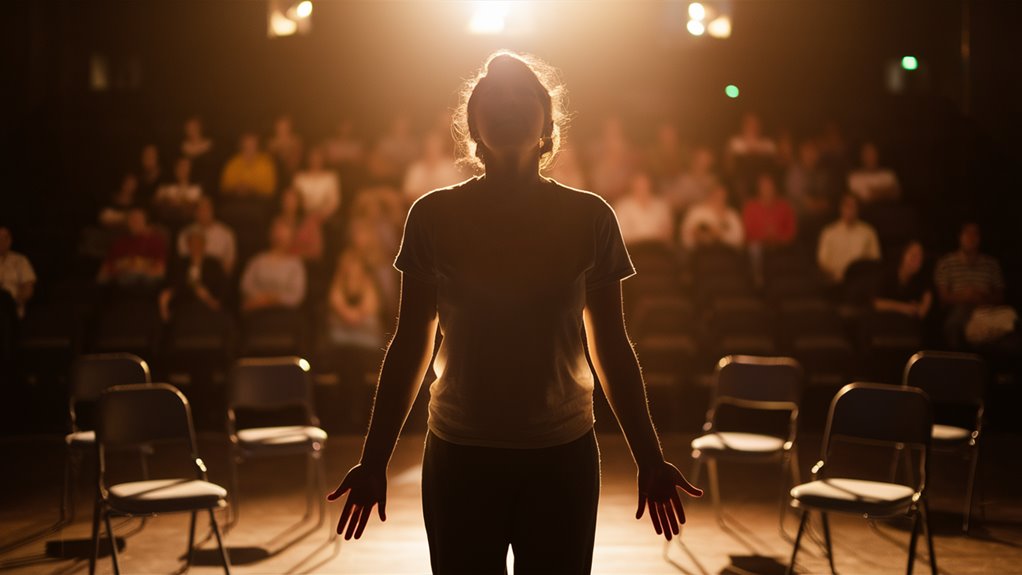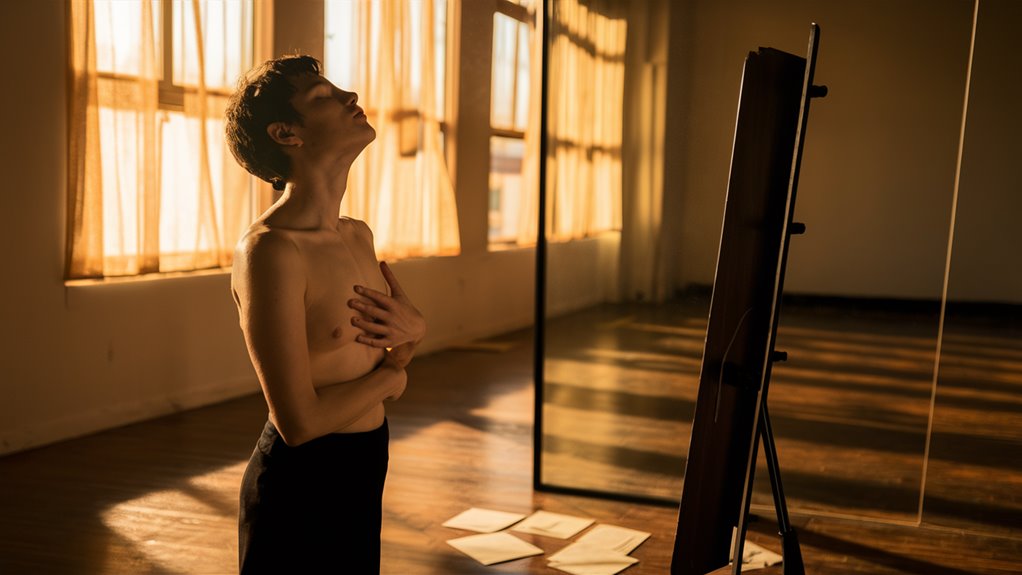
How to Overcome the Fear of Singing in Public
Building Foundation and Confidence
With vocal techniques as our starting point, your own appearance in front of a mirror will aid you in self-help as well as building confidence. A diaphragmatic exercise which concentrates on proper breathing helps you to acquire the skill that will stay with you and pull you through when you are singing live on stage. Please establish a set of relaxation techniques that work for you as well as a consistent preperformance routine—both these will give you something to hold onto and lessen the anxious feeling.
Progressive Exposure Training
Through systematic desensitization, performance anxiety (PA) is very effectively operated. Begin by recording yourself practicing to prepare for desensitization, and gradually get your friends to help out with the process as well. Before you know it, you will be singing in front of large groups. The audience should be:
- Friends at home
- Family members
- Small gatherings of those who trust you
- Neighborhood open mic nights
- Town hall ceremonies
- The biggest and best practices: perform in larger concert halls!
Professional Development Strategies
The key to keeping your vocal organs well under control is:
- Using them regularly
- Training them
- Using mental imagery as a crutch
- Doing mental exercises
- Receiving expert singing instruction
When you have built a strong foundation like this, performing in public gets a completely new lease on life. What was once terrifying will now be a stage ready to rise up and welcome its audience instead.
Understanding Music Performance Anxiety
The Science Behind Music Performance Anxiety
Physical symptoms are the result of performance anxiety. When we are faced with the prospect of performing, adrenaline surges through our system which causes voices to shake and hearts to race. This condition affects singers of all levels—from beginners up to professionals.
Physical and Mental Symptoms
Physical Manifestations:
- Hand tremors
- Dry mouth
- Shortness of breath when taking a deep breath
- Heart palpitations
- Muscle tension
Impact on Psychology:
Performance anxiety produces negative thoughts that take on a life of their own, focusing chiefly upon potential judgment, past failures, and fear of mistakes. This psychological pressure has a direct effect on the physical body, with symptoms creating cyclical patterns which often result in lower-quality performances.
Root Causes and Triggers
Rarely for most musicians, the roots of suffering performance anxiety can often be found close to home. Every now and again:
- Perfectionist tendencies
- Fear of public judgment
- Negative experiences
- Forcing oneself to inhuman pressures
- Over-ambitious hopes of glory
Breaking the Anxiety Cycle
Understanding this relationship between thoughts and physical responses becomes the key to controlling performance anxiety. Anxiety symptoms appear as natural reactions instead of something wrong with the person concerned, enabling them to be eliminated in the longer term and leading to a stronger mind for later musical performances.
With the identification of possible anxiety triggers and the introduction of focused strategies for resolving them, performers can channel the energy of stage fright into stage presence and musical expression.
Building Inner Confidence for Performers
Bases of Performance Confidence
Building inner confidence starts by recognizing that real self-assurance comes to life only gradually through continuous effort and many small victories along the way.
- Set performance goals which are within easy reach so you can progressively risk more and more.
- Begin with speaking to a singing teacher in front of the mirror, then move up to simple solo concerts as well.
- Try recording these now perfect pieces and listen back without any sense of criticism but only compassion for your efforts to improve yourself!
Growth & Progress in Life
Acceptance of oneself is the foundation on which real confidence is built. Instead of seeking perfection, look for measurable improvements, and through each small triumph, confidence expands by degrees.
- Keep a record book of your singing accomplishments—from minor breakthroughs to major milestones.
- Before performances, look through this log to remind yourself of your progress.
Mental Performance Techniques: Visualization and Reinforcement
- Make performance visualization part of your daily routine. Imagine yourself singing well, bringing small details down to earth into reality.
- Rehearse any unexpected situations that might crop up during a performance.
- When self-doubt surfaces, counter negative thoughts with concrete evidence of past achievements.
Building Performance Momentum
- With every performance, work to maintain positive self-talk and an emphasis on your strengths.
- Develop a pre-performance ritual that primes your body and mind to perform effectively.
Mastering the Craft of Singing: Diaphragmatic Breathing
Essential Breathing Techniques
- Place your hands strategically—one on your chest, one on the lower back of your abdomen.
- During inspiration, what is important is to expand the abdominal area, not make any significant external movements with the chest at all.
- Imagine that the lower part of your stomach is a balloon that fills gradually with slow inhalations.
Breathing Pattern:
- Searching for the perfect karaoke
- Hold the breath for 2 counts while retaining control of abdominal and vocal volume
- Release through the mouth over 6 beats for exhalation
- Continue for 5-10 minutes

Breath Management for Vocal Control
- Keep relaxed shoulder blades
- Keep your throat relaxed and open
- Breathe deliberately between phrases
- Sustain deep breathing throughout
This practice of the fundamentals of breathing transforms anxious performances into confident, controlled vocal expressions.
Mastering Strategic Practice Techniques
Recording Yourself and Assessing Progress
- Recording your practice sessions allows for critical assessment and improvement tracking.
- Compare recordings over time to monitor progress.
Comprehensive Practice Plan
Time-bound practices are suggested:
- 5-minute warm-up – Humming and singing scales to gently activate the voice.
- 15-30 minutes of focused practice – Work on specific vocal techniques or challenging sections.
- Cooldown exercises – Relax the vocal cords after singing.
Advanced Preparation for Performance
- Rehearse in performance attire for familiarity.
- Practice with a microphone to adjust to amplified sound.
- Simulate stage settings by performing in front of mirrors or small audiences.
Expanding Your Performance Comfort Zone
Gradual Exposure to Live Audiences
- Start with solo performances at home.
- Move on to singing in front of close friends and family.
- Perform at local community events.
- Join a small choir or singing group.
- Participate in open mic nights or competitions.
Opportunities for Performing in a Group
- Small choirs and community singing groups provide a supportive environment.
- Group performances allow for collaborative blending and stage presence development.
Advanced Performance Settings
Gradually transition into larger, more controlled performance environments such as:
- Local talent exhibitions
- Small music festivals
- Community events
Performance Development Management
- Each stage must be fully grasped and mastered before progressing to the next.
- If difficulties arise, return to a previous stage, rebuild confidence, and move forward.
By following structured practice and exposure techniques, singers can transform fear into stage confidence and enjoy performing in public.


